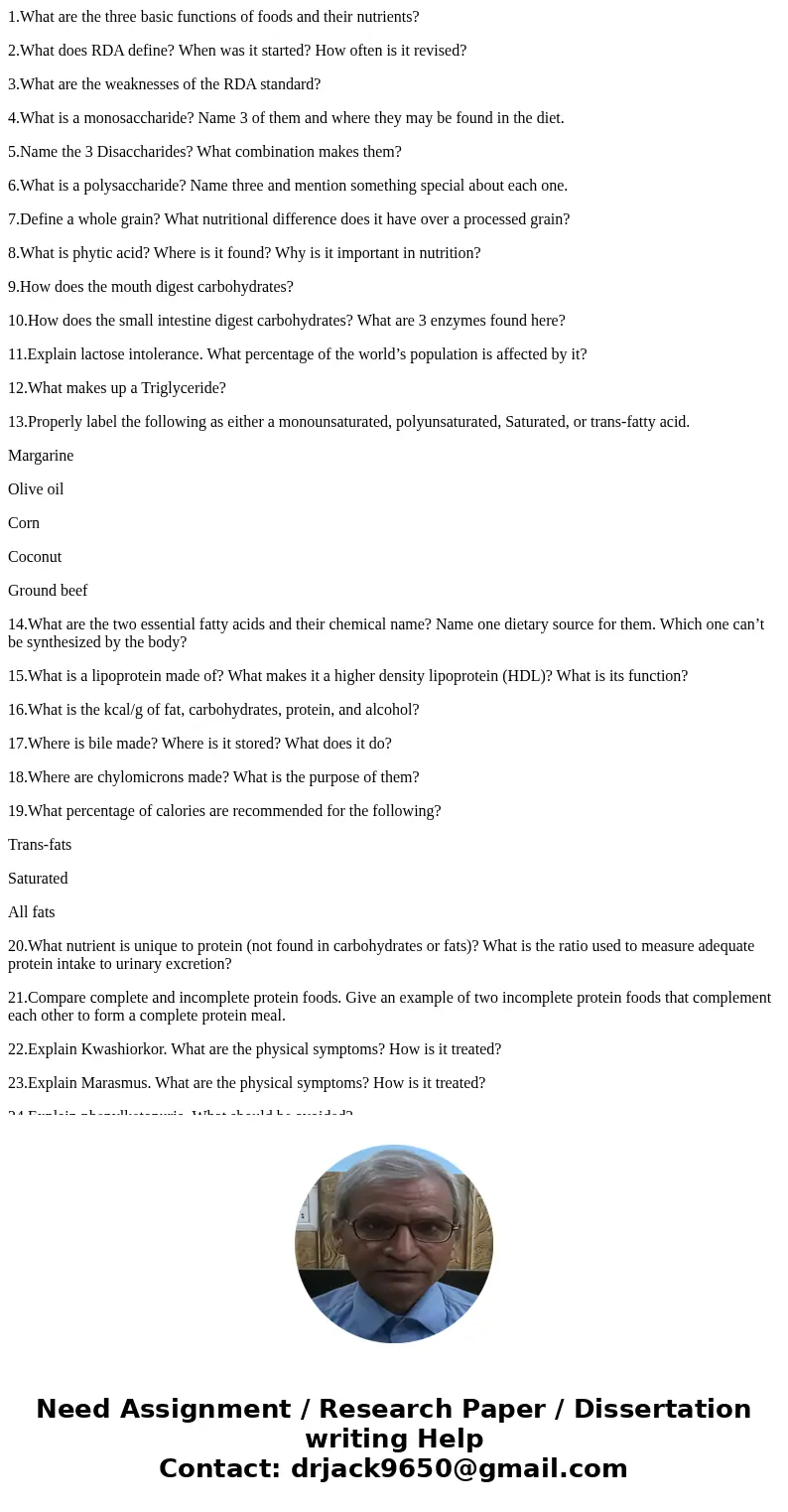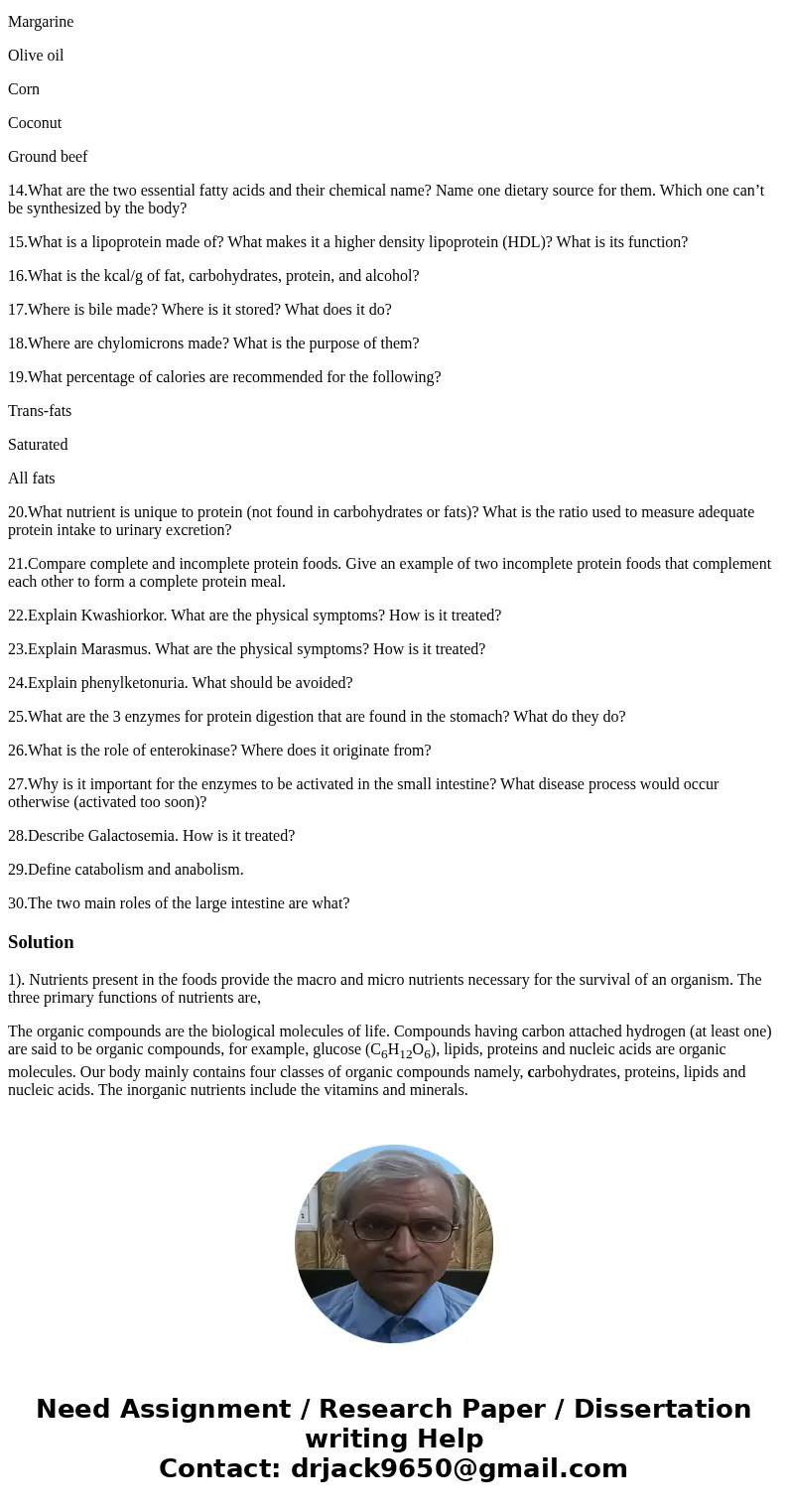1What are the three basic functions of foods and their nutri
1.What are the three basic functions of foods and their nutrients?
2.What does RDA define? When was it started? How often is it revised?
3.What are the weaknesses of the RDA standard?
4.What is a monosaccharide? Name 3 of them and where they may be found in the diet.
5.Name the 3 Disaccharides? What combination makes them?
6.What is a polysaccharide? Name three and mention something special about each one.
7.Define a whole grain? What nutritional difference does it have over a processed grain?
8.What is phytic acid? Where is it found? Why is it important in nutrition?
9.How does the mouth digest carbohydrates?
10.How does the small intestine digest carbohydrates? What are 3 enzymes found here?
11.Explain lactose intolerance. What percentage of the world’s population is affected by it?
12.What makes up a Triglyceride?
13.Properly label the following as either a monounsaturated, polyunsaturated, Saturated, or trans-fatty acid.
Margarine
Olive oil
Corn
Coconut
Ground beef
14.What are the two essential fatty acids and their chemical name? Name one dietary source for them. Which one can’t be synthesized by the body?
15.What is a lipoprotein made of? What makes it a higher density lipoprotein (HDL)? What is its function?
16.What is the kcal/g of fat, carbohydrates, protein, and alcohol?
17.Where is bile made? Where is it stored? What does it do?
18.Where are chylomicrons made? What is the purpose of them?
19.What percentage of calories are recommended for the following?
Trans-fats
Saturated
All fats
20.What nutrient is unique to protein (not found in carbohydrates or fats)? What is the ratio used to measure adequate protein intake to urinary excretion?
21.Compare complete and incomplete protein foods. Give an example of two incomplete protein foods that complement each other to form a complete protein meal.
22.Explain Kwashiorkor. What are the physical symptoms? How is it treated?
23.Explain Marasmus. What are the physical symptoms? How is it treated?
24.Explain phenylketonuria. What should be avoided?
25.What are the 3 enzymes for protein digestion that are found in the stomach? What do they do?
26.What is the role of enterokinase? Where does it originate from?
27.Why is it important for the enzymes to be activated in the small intestine? What disease process would occur otherwise (activated too soon)?
28.Describe Galactosemia. How is it treated?
29.Define catabolism and anabolism.
30.The two main roles of the large intestine are what?
Solution
1). Nutrients present in the foods provide the macro and micro nutrients necessary for the survival of an organism. The three primary functions of nutrients are,
The organic compounds are the biological molecules of life. Compounds having carbon attached hydrogen (at least one) are said to be organic compounds, for example, glucose (C6H12O6), lipids, proteins and nucleic acids are organic molecules. Our body mainly contains four classes of organic compounds namely, carbohydrates, proteins, lipids and nucleic acids. The inorganic nutrients include the vitamins and minerals.


 Homework Sourse
Homework Sourse